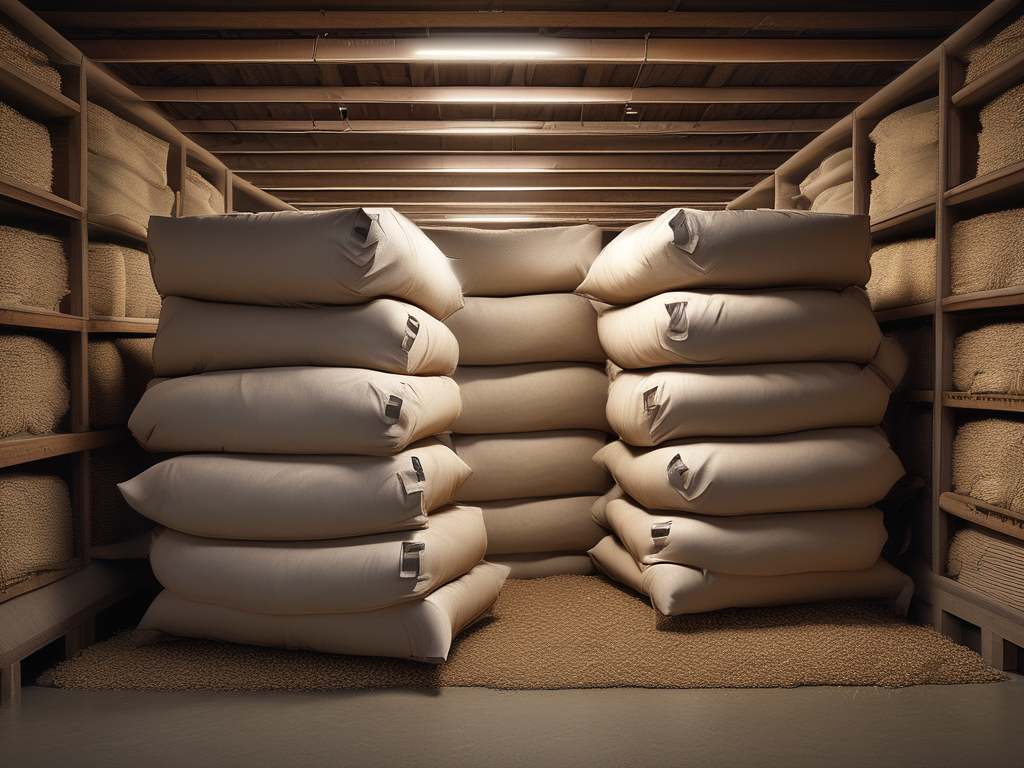When it comes to post-harvest management, effective storage solutions are crucial for maintaining the quality and value of crops. For farmers in Nigeria and across Africa, choosing the right storage method can significantly reduce post-harvest losses, increase profitability, and ensure food security. In this article, we will explore the best storage solutions for harvested crops, providing verifiable examples and practical tips to help you make informed decisions.
1. Hermetic Storage Bags
Hermetic storage bags are one of the most effective solutions for storing grains and legumes. These bags are airtight and prevent the entry of air, moisture, and pests, thereby preserving the quality of the stored crops.
Example: In Nigeria, the use of PICS (Purdue Improved Crop Storage) bags has shown remarkable success. Farmers using PICS bags for cowpea storage reported a significant reduction in weevil infestation and maintained the quality of their produce for up to one year without chemical treatments.
Benefits:
- Protection against pests and mold
- Long-term storage without chemical pesticides
- Cost-effective and reusable
2. Metal Silos
Metal silos provide a durable and secure storage solution for various grains. These silos are constructed from galvanized metal sheets and are designed to keep out moisture and pests.
Example: In Kenya, the introduction of metal silos by organizations such as CIMMYT (International Maize and Wheat Improvement Center) has led to reduced post-harvest losses in maize. Farmers reported a reduction in losses from 30% to less than 1%.
Benefits:
- Long-lasting and robust construction
- Effective pest control
- Suitable for large-scale storage
3. Cold Storage Facilities
For perishable crops such as fruits and vegetables, cold storage facilities are essential. These facilities maintain a controlled temperature and humidity level, extending the shelf life of fresh produce.
Example: In South Africa, the establishment of cold storage facilities for citrus fruits has enabled farmers to export high-quality produce to international markets. This investment has increased the export value and ensured the fruits remain fresh during transit.
Benefits:
- Extends the shelf life of perishable crops
- Maintains quality and freshness
- Enables access to distant markets
4. Improved Granaries
Traditional granaries have been upgraded with modern techniques to enhance their efficiency. Improved granaries incorporate better construction materials and design features to protect against pests, moisture, and extreme weather conditions.
Example: In Ghana, improved granaries constructed with mud and thatch have been lined with plastic sheets and elevated off the ground. These improvements have significantly reduced post-harvest losses for maize and other grains.
Benefits:
- Low-cost and locally available materials
- Enhanced protection against environmental factors
- Suitable for smallholder farmers
Choosing the Right Solution
Selecting the best storage solution depends on several factors, including the type of crop, scale of production, and available resources. Farmers should consider the following:
- Crop Type: Different crops have varying storage requirements. Grains like maize and cowpeas benefit from hermetic bags and metal silos, while fruits and vegetables require cold storage.
- Scale of Production: Large-scale farmers may invest in metal silos or cold storage facilities, whereas smallholder farmers might find improved granaries or hermetic bags more cost-effective.
- Climate Conditions: In regions with high humidity, airtight storage solutions like hermetic bags are essential to prevent mold growth and spoilage.
- Market Access: Farmers aiming to access distant markets should invest in storage solutions that maintain the quality of their produce during transportation, such as cold storage facilities.
Conclusion
Investing in the right storage solutions is crucial for reducing post-harvest losses and maximizing the profitability of harvested crops. Hermetic storage bags, metal silos, cold storage facilities, and improved granaries offer viable options for farmers in Nigeria and across Africa. By adopting these technologies, farmers can enhance food security, increase their income, and contribute to the agricultural development of the region.
Call to Action: For more information on the best storage solutions for your specific crops, join our mailing list for ongoing benefits, coaching, training, and mentorship on agricultural business matters. Sign up today and take the first step towards securing the future of your harvests!


